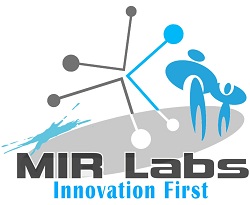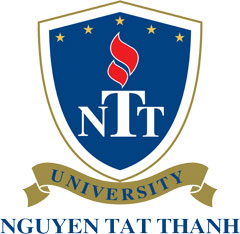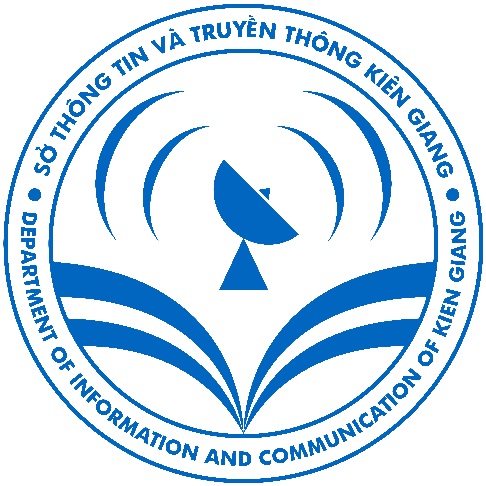Ontology Convergence after Evolution

Asad Masood Khattak is working as Assistant Professor at Department of Computer Engineering, Kyung Hee University, Korea. He has completed his PhD from Department of Computer Engineering, Kyung Hee University, Korea and received Best PhD Thesis award. His research interests include knowledge management, knowledge representation, semantic web, ontology, and context-aware computing. He has nine journal publications in SCI/E indexed journals. He also has over 20 well reputed conference publications. Email: [email protected]
This tutorial is useful for audience having research interest in Semantic Web, Ontology, Knowledge Representation, Information Retrieval, Data Management, and (Semi) Structured Data. Half of the tutorial is based on the work author has already published and remaining half is discussion on the open challenges author is currently focusing on. This will be a full day (3 hours) tutorial.
Abstract
Ontologies are usually large, structured, and dynamic in nature. Changes in ontologies are expected to accommodate new knowledge about the domain of discourse. These changes are influenced by the uncontrolled, decentralized, and complex nature of the Semantic Web. In this tutorial we explain in detail Change History Ontology as the backbone conceptual model of the change management framework. It acts as a glue to bind different components in the framework and to guarantee effective recovery, query reformulation, understanding semantic of change, change visualization, collaborative engineering, and mapping reconciliation. The changes capturing ability, change logging, change recovery, query reformulation, and ontology mapping reconciliation are compared with respective existing systems. The results have shown that our framework has better coverage, performance, and accuracy. All these tests were conducted using online available benchmark datasets; OMV, SWRC Semantic Web Technology Evaluation Ontology (SWETO) and different versions of CIDOC Conceptual Reference Model. We are also looking for change prediction by applying machine learning techniques.
Detail
Ontologies are formal description of shared conceptualization of a domain of discourse. Usage of ontology is wide spread in Information Systems especially when building a lingua franca for resolving the terminological and conceptual incompatibilities between information networks of varying archetype and different provenance [1]. Ontology evolution takes place when the perspective under which the domain is viewed has changed [2]. More specifically, ontology evolution means modifying or upgrading the ontology when there is a certain need for change as Communities of Practice concerned with a field of knowledge develop a deeper understanding of the domain. Ontology change management deals with the problem of deciding the modifications to perform in ontology, implementation of these modifications, and the management of their effects in dependent data structures, ontologies, services, applications, and agents [3].
One of the crucial tasks faced by practitioners and researchers in the area of knowledge representation is to efficiently encode the human knowledge in ontologies. Maintenance of usually large and dynamic ontologies and in particular adaptation of these ontologies to new knowledge is one of the most challenging problems in the Semantic Web research. This has led to the emergence of several different, but closely related, research areas such as ontology integration, merging, and versioning [3].
The ontology evolution process deals with the growth of the ontology as well as capturing and accommodating new information [3]. The ontology evolves to a new state that cause the dependant ontologies and services become invalid [4]. Consequently, ontology change management solutions have to answer a number of questions [5]. First question is posed to the systems overall working, how to maintain all the changes in a consistent and coherent manner?" Secondly, in ontology enrichment, the modifications are made to the ontology and it evolves from one consistent state to another without preserving information about the previous state. This makes it hard to refer the previous state of ontology unless the changes are preserved in some form. How to preserve the ontology changes?

Fig. 1. Reification of time-indexed participation: ChangeSet is a setting for a change event, ontology resources participating in that change event, and the time interval at which the change occurs.
The goal of this tutorial is to provide a comprehensive review of approaches followed by different research groups for ontology evolution. The main features of all the discussed approaches are elaborated; their contributions and limitations are highlighted and also critically analyzed. The aim is also to focus on the use of ontology in converging technologies for the purpose of information exchange, integration, mediation, and the effects of newly incorporated changes in ontology on the convergent technologies using evolving ontology. For this discussion we used Vehicle Ontology as a case study to express all the examples. The evolution process of ontology is a complex process. We discuss some open challenges (currently under consideration) such as; 1) Change Detection: that how new changes are detected and incorporated in domain ontology. It consist of two sub-challenges; a) Relevance Detection for the new resource with the existing resources in ontology and b) Selection among alternatives resources that best match with the new resource. 2) Conflict Analysis: new change may make ontology inconsistent, so a need is to avoid conflicts. It also has two sub-challenges; a) System Training and b) Impact of deduced Changes. 3) Change Traceability: keeps track of all the changes happening to ontology. These challenges need to be addressed in order to completely automate the process of ontology evolution. For this purpose we have developed Change History Ontology (CHO) [6], used to record the changes by creating a semantically structured changes log to record all the ontology changes. The structure was developed by using participation pattern of ontology changes and bundled the related changes in a particular ChangeSet instance (see Fig. 1).
The stored ontology changes are later used for different future applications. We discover and highlight five candidate applications [5] that can effectively use ontology change history. These applications are implemented mainly to minimize the consequent effects of ontology evolution on dependent data, applications, artifacts, services, systems, and technologies. The applications are; 1) Ontology Temporal Traceability: that help to recover the ontology from one consistent state to another. 2) Change Visualization: to visualize the ontology changes, change effects on ontology, and better understanding the evolution behavior of ontology. 3) Change Predictions: to find out patterns in ontology changes and predict future changes. 4) Query Reformulation: to reformulate the query for evolved ontology that was posed on the previous version of ontology. 5) Rebuilding Ontology Mappings: to remove staled ontology mappings and generate new reliable mappings in less time than the original time required. The applications are tested on slandered data set ontologies used by community to validate the system working. The results we have achieved are very encouraging [7]. Further results are currently in pipeline for journal submission.
References
[1] B. Smith, Blackwell Guide to the Philosophy of Computing and Information, chap. Ontology, Blackwell Philosophy Guides, Blackwell Publishing, 2003.
[2] N. Noy, S. Kunnatur, M. Klein, M. Musen, Tracking changes during ontology evolution, in: Intl Semantic Web Conf, USA, 2002.
[3] G. Flouris, D. Manakanatas, H. Kondylakis, D. Plexousakis, G. Antoniou. Ontology Change: Classification and Survey. Knowledge Engineering Review (KER), 23(2), pages 117-152, 2008.
[4] A. M. Khattak, K. Latif, S. Y. Lee, Y. K. Lee, T. Rasheed, Building an integrated framework for ontology evolution management, in: 12th International Conference on International Business Information Management Association, Malaysia, 2009.
[5] E. Gahleitner, K. Latif, A. Gruber, R. Westenthaler, Speci_cation of methodology and workbench for dynamic ontology creation, Deliverable D201, DynamOnt Project (2006).
[6] A. M. Khattak, K. Latif, S. Khan, N. Ahmed, "Managing Change History in Web Ontologies," Semantics, Knowledge and Grid, International Conference on, pp. 347-350, 2008.
[7] A. M. Khattak, K. Latif, and S. Y. Lee, "Change Management in Evolving Web Ontologies", Knowledge-based Systems, (SCI IF: 1.574), ISSN: 0950-707051, June 6, 2012.








































